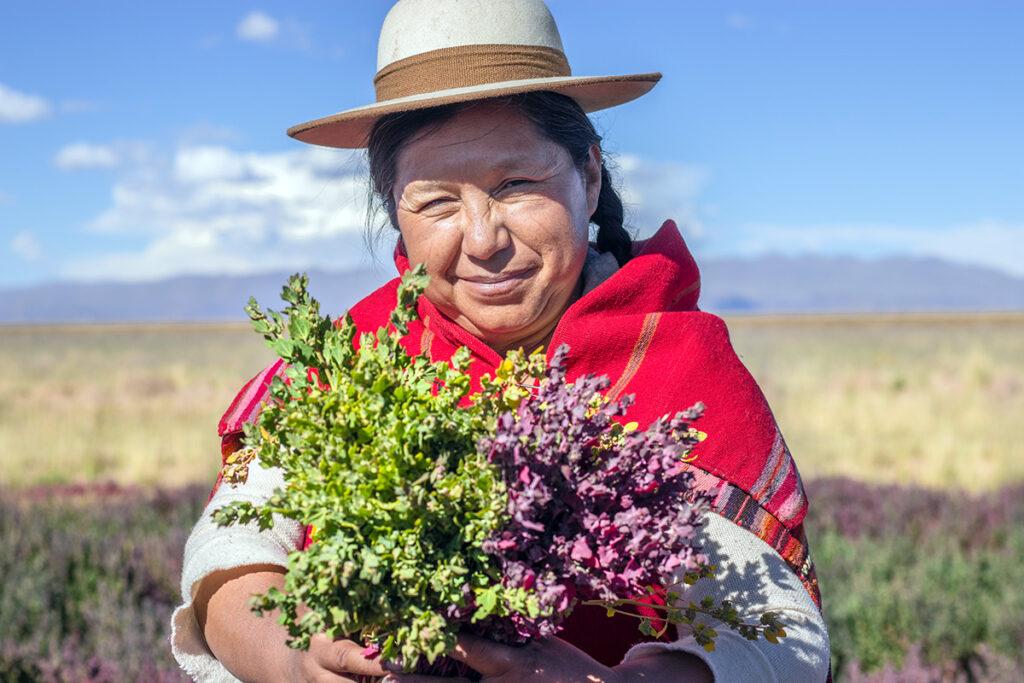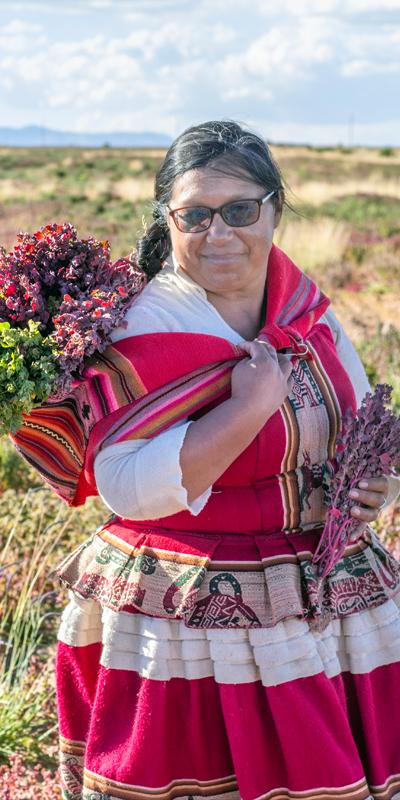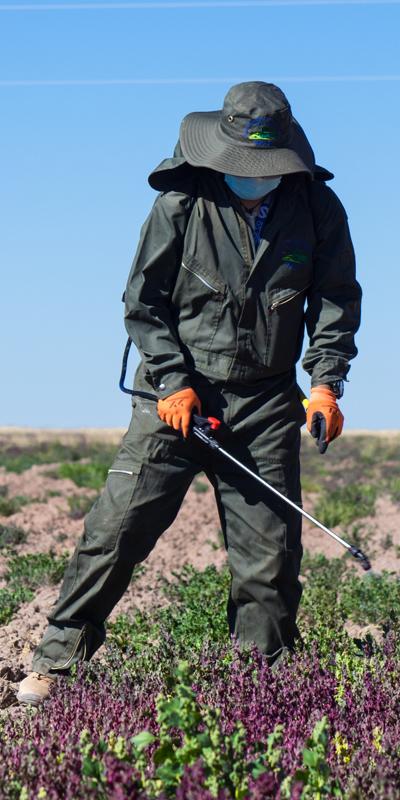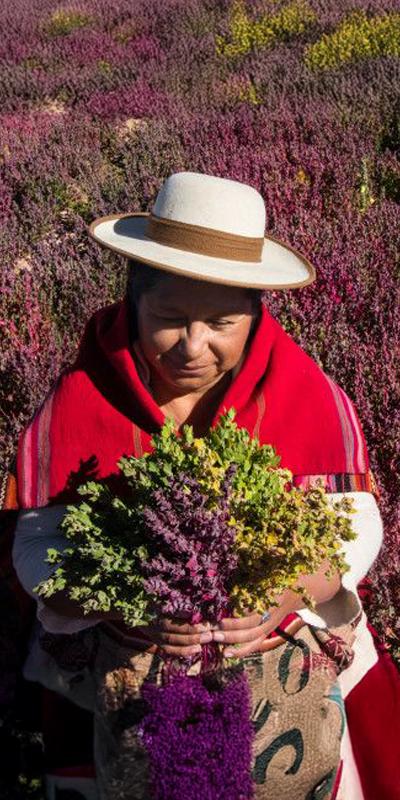
TRIGIDIA JIMÉNEZ FRANCO: LA MUJER QUE REVALORIZÓ LA CAÑAHUA EN BOLIVIA
Es agrónoma, productora y una de las principales promotoras del consumo de este grano andino en Bolivia y en la región.

Es agrónoma, productora y una de las principales promotoras del consumo de este grano andino en Bolivia y en la región.
Escribe Raquel Telias (IG @raqueltelias)
Es la mayor productora de cañahua (cañihua, en Perú) de Latinoamérica y promotora de su cultivo y consumo desde Granja Samiri, un proyecto que une ciencia y sabiduría ancestral para el desarrollo sostenible y saludable del grano andino.



La década de los 60 fue una etapa crítica para la cañahua –prima de la quinua– cuando disminuyó su cultivo en Bolivia, llegando a ser producido solo por 150 familias para autoconsumo. En esos años también nacía Trigidia en una comunidad quechua, padre agricultor de trigo, criada en Oruro, graduada de agrónoma y hoy la mayor productora de cañahua de Latinoamérica, una de sus principales promotoras y fundadora de la Red Nacional de Cañahua.
Una mujer que a los 45 años volvió al campo y a la pollera indígena para empezar con Granja Samiri, proyecto sustentable y sostenible de cultivo y planta de elaboración de productos como barras y harinas. Uniendo conocimientos científicos y ancestrales enseñados por sus suegros, Trigidia Jiménez Franco ha desarrollado el grano, aplicado diferentes tecnologías para diferenciarlo, mejorarlo y llevar a cabo un modelo de empresa rural, amigable con el medio ambiente, que potencia sus recursos humanos y al poderoso grano andino, logrando revalorizarlo, masificarlo y convertido en un símbolo de soberanía alimentaria de Bolivia. “Hace 20 años me enamoré de la cañahua. Me ha dado nuevos enfoques y valores. Vinculado con la naturaleza, reconectado con mi lado indígena, me sacó de un mundo machista y mostró mi poder interior. Me hizo ser feliz”.

Words Raquel Telias (IG @raqueltelias)
As Latin American’s largest producer of amaranth (known as cañihua in Peru and cañahua in Bolivia), she has been promoting its cultivation and consumption through Granja Samiri. This project merges science and ancestral wisdom for this Andean grain’s sustainable and healthy development.



The 1960s were a critical period for amaranth—a close relative of quinoa— when its cultivation declined drastically in Bolivia, leaving only 150 families producing it for self-consumption. It was during these years that Trigidia was born into a Quechua community. Raised in Oruro by a father who was a wheat farmer, she later graduated as an agronomist. Today, she is the largest producer of cañahua in Latin America, a key advocate for its cultivation, and the founder of the National Cañahua Network.
At the age of 45, she returned to the countryside. She embraced her indigenous heritage by wearing the traditional pollera and launching Granja Samiri, a sustainable farming project and processing plant that produces products like bars and flour. By combining scientific knowledge with ancestral techniques learned from her in-laws, Trigidia Jiménez Franco has not only developed the grain. Still, she has also applied various technologies to differentiate and improve it. She has established an eco-friendly rural business model that values human resources and enhances the potential of this powerful Andean grain, ultimately restoring its significance, increasing its consumption, and turning it into a symbol of Bolivia’s food sovereignty. «Twenty years ago, I fell in love with cañahua. It gave me new perspectives and values. It connected me with nature, helped me reconnect with my indigenous roots, freed me from a male-dominated world, and revealed my inner strength. It made me happy.»
El periodista gastronómico Rubén Darío Rojas hace un recorrido por los rincones más sabrosos de la capital.
Leer másSu restaurante, El Hab Café, ofrece una propuesta gastronómica que se sirve de su propia chacra a una hora de Bogotá. Hay diseño, buen comer y excelente ubicación.
Leer másLa Paz es una ciudad que se recorre también por su cocina: desde un mercado popular al fine dining, pasando por brasas, sopas ancestrales y platos que saben a hogar.
Leer más